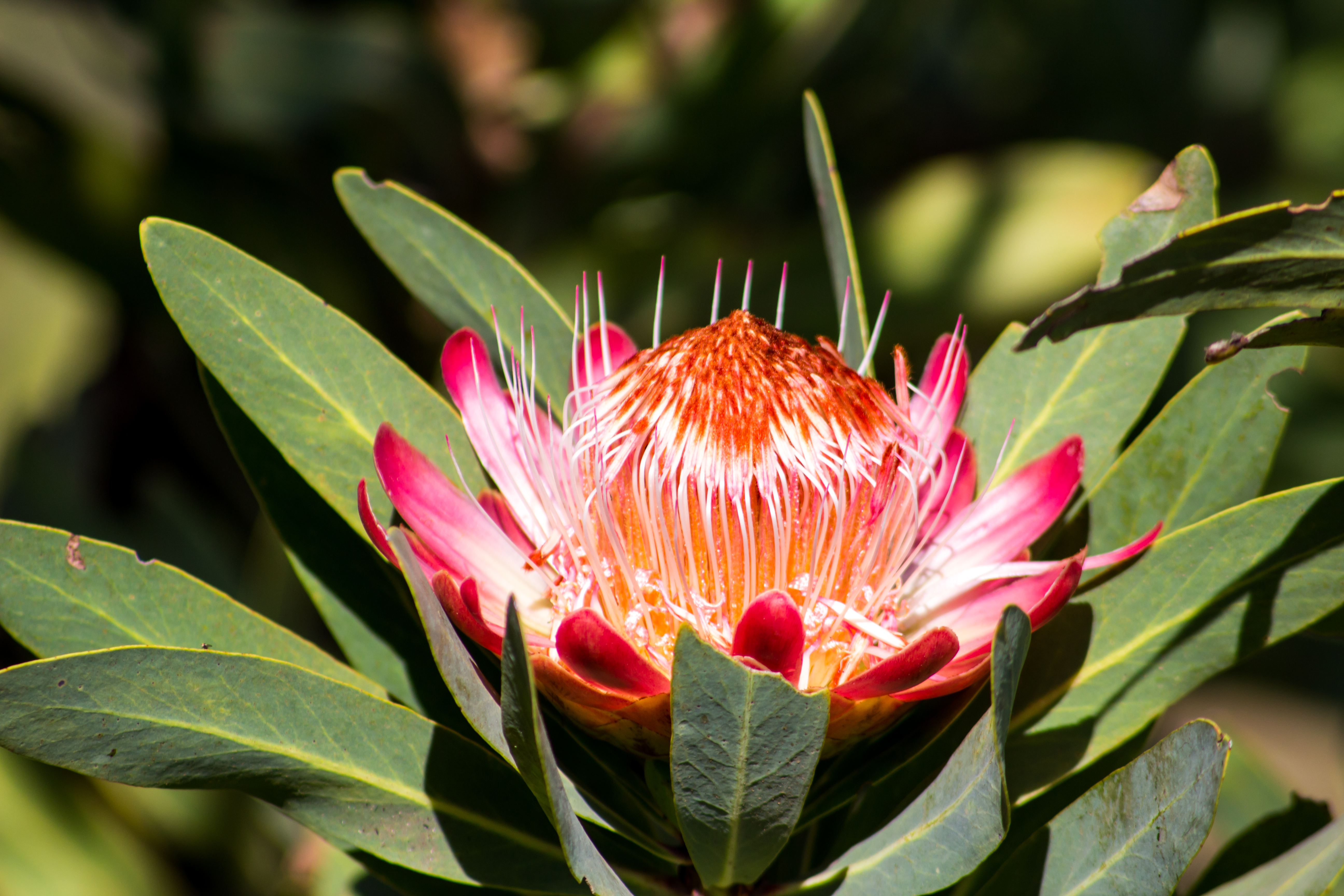Common protea
(Protea caffra)

Description
Protea caffra (sometimes called the common protea), native to South Africa, is a small tree or shrub which occurs in open or wooded grassland, usually on rocky ridges. Its leaves are leathery and hairless. The flower head is solitary or in clusters of 3 or 4 with the involucral bracts a pale red, pink or cream colour. The fruit is a densely hairy nut. The species is highly variable and has several subspecies. Protea is a flowering plant genus in the family Proteaceae. The species epithet caffra is derived from Kaffraria, the 17th century geographical name for the eastern regions of South Africa, especially Natal where the shrub was first discovered by Ferdinand Krauss in December/January 1839/40. P. caffra has never attracted much attention from horticulturalists. It was induced to flower at Kew Gardens in May 1893, but this failed to kindle any further interest in the species. Its chief claim to fame is that it was illustrated on the reverse of a South African coin called the "tickey", the equivalent of the British threepenny bit, for almost 30 years until the coin was withdrawn in 1961. Upright shrub to small tree 3 – 8m in height with a definite main stem up to 400mm in diameter, crown uneven and spreading. Bark black to dark brown with net-like fissures when mature. Leaves linear-elliptic to linear-falcate, narrow to broadly elliptic, narrow to broadly invert lanceolate, occasionally falcate; 70 – 250mm in length, 4 – 45mm wide, tips blunt to acuminate; smooth, leathery to thin and papery, light green to glaucous green, have a tendency to clump in each year's growth. Flowers carried at the end of leafy twigs 4 – 12mm in diameter, usually singly but up to 4 heads may be grouped at the tip; globose to egg-shaped, broad and shallow when fully open, 45 – 80mm in diameter, base broad convex to flat, 20 – 30mm in diameter. Involucral bracts in 6 – 8 series; outer series broad oval to deltoid, 10 – 20mm wide, 5 – 7mm long, usually with silky silvery pelt of varying thickness at the distal ends but may be hairless, closely and densely shingled; inner series elongated to broadly elongated spatulate, 30 – 50mm long, 10 – 20mm wide, tips rounded to almost acuminate, slightly concave, smooth, varying in color from pale cream to brick red; very variable.
Taxonomic tree:







